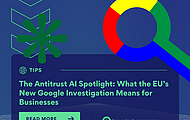Hackers Are Now Using Hacked OpenAI Accounts to Hide Malware

Our working methods are being revolutionized by artificial intelligence, but hackers are also coming up with creative ways to turn these same technologies into weapons. In an unsettling new tactic, hackers are breaking into authentic user accounts on OpenAI's platform to utilize the site as a secret communication channel for their malware rather than to create content.
This advanced technique, referred to as "AI-as-a-Command-and-Control (C2)," signifies a substantial advancement in cyberthreats. Attackers might evade conventional security measures that frequently whitelist trustworthy services like OpenAI by taking advantage of the trusted nature of AI platforms to conceal their malevolent actions in plain sight.
How the Attack Works
The plan is based on a deliberate misuse of OpenAI's API:
- Account Compromise: Usually using credentials taken from phishing scams or data breaches, attackers initially obtain access to a valid OpenAI user account.
- Malware Deployment: A malicious application, frequently sent via a phishing email or masquerading as genuine software, is installed on a victim's computer.
- Covert Communications: The malware interacts with OpenAI's legitimate API directly rather than via a dubious, attacker-controlled server. It delivers encrypted commands buried within seemingly benign queries, and receives instructions hidden in the AI's generated text responses.
This procedure essentially transforms a popular AI service into a safe, anonymous chat system that thieves may use to manage their malware networks. The communication easily eludes common network monitoring technologies since it is sent to a real domain via a trusted, encrypted connection.
Why This Technique Is So Dangerous
Attackers benefit from using AI systems for C2 communications in a number of ways.
- Avoids Detection: Unlike connections to known malicious IP addresses, traffic to and from OpenAI seems regular and authentic.
- Betrays Trust: Traffic to well-known services is less likely to be flagged or blocked by security measures.
- Offers Anonymity: Attackers conceal their location and identity by utilizing compromised accounts.
- Assures Reliability: Well-known AI platforms have a high uptime rate, which gives persistent attacks a steady path.
How to Protect Your Organization
A combination of technological safeguards and user awareness is necessary to stay safe:
Safe AI Accounts: Make sure all corporate AI accounts have multi-factor authentication (MFA) and strong, one-of-a-kind passwords. Take these credentials just as seriously as you would administrator passwords.
Track API Usage: Put in place instruments that can track and record API requests to services such as OpenAI. Keep an eye out for unusual usage trends or large numbers of requests coming from strange sources.
Implement Advanced Threat Protection: Make use of Endpoint Detection and Response (EDR) tools that are able to identify malware's subtle, questionable actions across all communication channels.
Employee Education: Teach employees the value of protecting all company accounts and how to spot the first phishing attempts that frequently result in credential theft.
Partner with Bayon Technologies Group for Proactive Defense
As cybercriminals continue to innovate, relying on traditional security measures is no longer enough. At Bayon Technologies Group, we help businesses stay ahead of these evolving threats. Our cybersecurity experts specialize in implementing advanced monitoring systems that can detect the abuse of cloud services, conducting regular security assessments to identify vulnerabilities, and providing employee training to build a resilient human firewall.
Don't let your trusted tools become a weapon against you. Secure your operations with Bayon Technologies Group!
‹ Back







